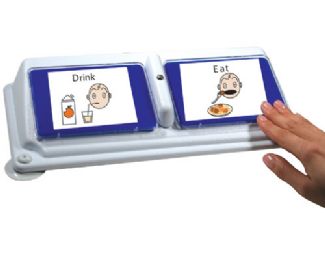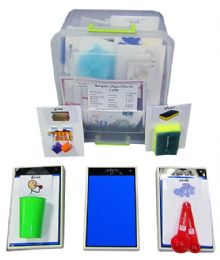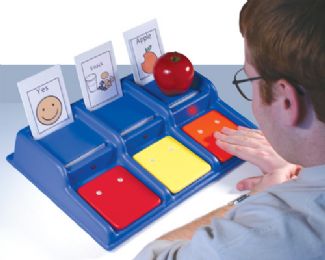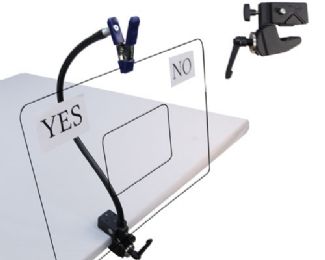
.jpg&newheight=260&quality=80)







.jpg&newheight=260&quality=80)

What Types of Augmentative Alternative Communication (AAC) Devices Exist?
When children or adults cannot use speech effectively to communicate, there are efficacious options to employ. An extensive array of AAC devices is available though Rehabmart from innovative manufacturers that include Enabling Devices, Ablenet, Adaptivation and Proxtalker. They range from educational assistance devices for use by special needs children, to alphabet or symbol boards useful for those who have lost natural speaking ability following stroke or throat surgery, to accessories you can use with tablet computers and e-readers.
Many of the 150+ devices carried by Rehabmart are electronic talking and recording message devices, used to record and play back messages that define wants and needs, or respond to simple yes/no questions. These devices are available with different numbers of messages recordable at various lengths. Multiple level recordings allow for sequential messages, and for grouping messages appropriate for different needs at different times of day. Some devices combine auditory and visual cues with the recorded messages. They help to develop language skills, and assist those learning (or re-learning) to initiate language. Such systems allow non-verbal persons to participate more fully in group activities, and help special needs students in the classroom or in social interactions throughout the day.
AAC devices are important tools in a complete communication system for those needing assistance. Special augmentative aids help people express themselves, and may increase school performance, social interaction and feelings of self-worth.
What Challenges or Conditions Benefit from Using AAC Devices?
Many congenital conditions, and medical conditions occurring at any time of life can affect or diminish the ability to speak and communicate easily. Augmentative alternative communication devices are designed to provide assistance to those whose natural speech or ability to communicate is limited or absent, including those afflicted through:
• Neurological conditions that can affect speech such as Huntington’s, Parkinson’s or ALS.
• Injuries that affect speech permanently or temporarily, like some traumatic brain injuries.
• Congenital conditions that limit speech or sensory motor development, and/or cognitive abilities, such as cerebral palsy.
• Autism spectrum effects on speech, emotional development and socialization skills.
• Total blindness or visual impairment.
• Dual-sensory impairments.
• Physical challenges, poor or diminished motor skills and mobility issues.
AAC users should not stop using speech and other natural forms of communication (gestures, facial expressions, body language and sign language) if they are able to do so. The AAC aids and devices are used to enhance, not fully replace, their communication.
Which types of trained experts work with those who use AAC devices? Are medical prescriptions needed?
Physicians, physical therapists, occupational therapists, speech-language pathologists, social workers, special education professionals and other experts may be involved in recommending appropriate communication aids and in working with those who will benefit from using AAC devices.
It is important to obtain an evaluation by professionals to develop the best communication system to meet your, or a loved one’s needs. You can have an evaluation at a medical facility, private practice, school district or center-based program. An evaluation should involve the potential AAC user and his family or caregivers, and a team of professionals working together.
While some AAC devices may be helpful to those who have lost speaking ability due to stroke, surgery or progressive neurological disorders, they are not used in the treatment of these medical conditions and do not require prescriptions.
How do Augmentative Alternative Communication Devices Benefit the People Who Use Them?
Augmentative and alternative communication (AAC) strategies may provide temporary communication assistance during recovery following traumatic brain injury, throat surgery or stroke. For individuals who require more permanent alternative communication aids, AAC devices will help them to successfully communicate and achieve more independence. They give the individual the ability to take an active role in directing personal care, effectively speak his mind, connect and communicate with others.
Regardless of cause, those who need to bridge communication gaps will find AAC devices that:
• Provide a voice through assistance with communicating words, sentences and phrases.
• Offer efficient and precise communication in an easy to use framework.
• Connect people to others in their sphere, whether in the community, at work, at school or at home.
• Allow for alternative access changes, such as switch scanning or eye control.
• Optionally give control over TV, appliances and some computers to encourage social interaction on a variety of platforms.
Hulet Smith, OT
Rehabmart Co-Founder & CEO
nrb